-
 Bitcoin
Bitcoin $108,192.4840
-0.79% -
 Ethereum
Ethereum $2,520.0996
-1.16% -
 Tether USDt
Tether USDt $1.0002
-0.01% -
 XRP
XRP $2.2216
-0.44% -
 BNB
BNB $655.3498
-0.46% -
 Solana
Solana $148.0291
-1.58% -
 USDC
USDC $0.9999
0.00% -
 TRON
TRON $0.2831
-1.37% -
 Dogecoin
Dogecoin $0.1642
-1.68% -
 Cardano
Cardano $0.5748
-1.24% -
 Hyperliquid
Hyperliquid $39.4087
1.28% -
 Sui
Sui $2.9157
-0.36% -
 Bitcoin Cash
Bitcoin Cash $483.5621
0.38% -
 Chainlink
Chainlink $13.2143
-1.13% -
 UNUS SED LEO
UNUS SED LEO $9.0623
0.20% -
 Avalanche
Avalanche $17.8302
-1.40% -
 Stellar
Stellar $0.2374
-1.09% -
 Toncoin
Toncoin $2.7496
-2.20% -
 Shiba Inu
Shiba Inu $0.0...01147
-0.83% -
 Hedera
Hedera $0.1557
0.09% -
 Litecoin
Litecoin $86.3775
-1.75% -
 Monero
Monero $312.5454
-2.83% -
 Polkadot
Polkadot $3.3663
-2.25% -
 Dai
Dai $1.0000
0.01% -
 Ethena USDe
Ethena USDe $1.0001
0.00% -
 Bitget Token
Bitget Token $4.4127
-1.15% -
 Uniswap
Uniswap $6.9598
-5.53% -
 Pepe
Pepe $0.0...09815
0.25% -
 Aave
Aave $270.5779
0.33% -
 Pi
Pi $0.4678
-3.14%
What are the risks of Coinbase leverage trading? How to set a stop loss to control losses?
Coinbase offers leverage trading, amplifying potential returns but also risks like market volatility and liquidation. Use stop losses to manage these risks effectively.
May 09, 2025 at 02:14 pm
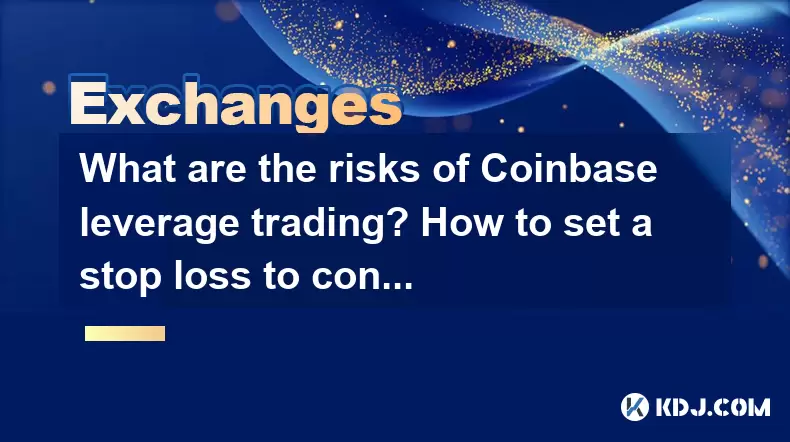
Coinbase, one of the leading cryptocurrency exchanges, offers leverage trading as a way for traders to potentially increase their returns. However, leverage trading comes with significant risks that traders must understand and manage. In this article, we will explore the risks associated with Coinbase leverage trading and provide a detailed guide on how to set a stop loss to control losses effectively.
Understanding Leverage Trading on Coinbase
Leverage trading on Coinbase allows traders to borrow funds to increase their trading position beyond their available capital. This means that traders can potentially amplify their profits, but it also increases the risk of substantial losses. When using leverage, a small movement in the market can lead to significant gains or losses.
Risks of Coinbase Leverage Trading
Market Volatility
The cryptocurrency market is known for its high volatility. Prices can fluctuate rapidly, which can be particularly dangerous when trading with leverage. A small adverse price movement can result in significant losses, especially if the trader's position is highly leveraged.
Liquidation Risk
When trading with leverage, there is a risk of liquidation. If the market moves against your position and your account balance falls below the maintenance margin requirement, Coinbase may automatically liquidate your position to cover the borrowed funds. This can happen quickly and without warning, leading to substantial losses.
Overtrading
Leverage can tempt traders to overtrade, taking on more positions than they can manage. This can lead to poor decision-making and increased exposure to market risks. Overtrading can also result in higher transaction fees and potential losses due to the increased number of trades.
Interest Costs
When using leverage, traders must pay interest on the borrowed funds. These costs can accumulate over time and eat into potential profits. It's essential to consider these costs when calculating the potential returns from leverage trading.
Emotional Stress
Trading with leverage can be emotionally stressful. The potential for significant losses can lead to anxiety and poor decision-making. Emotional stress can cause traders to deviate from their trading strategies, increasing the risk of losses.
Setting a Stop Loss to Control Losses
Setting a stop loss is a crucial strategy for managing the risks associated with leverage trading. A stop loss order automatically closes your position when the price reaches a specified level, limiting your potential losses. Here's a detailed guide on how to set a stop loss on Coinbase.
Accessing the Trading Platform
- Log in to your Coinbase account and navigate to the trading platform.
- Select the cryptocurrency pair you want to trade with leverage.
Opening a Leveraged Position
- Choose the leverage amount you want to use. Coinbase offers various leverage options, such as 2x, 3x, or 5x.
- Enter the amount you want to trade and confirm the order to open the leveraged position.
Setting the Stop Loss
- Click on the open position to access the order details.
- Look for the 'Stop Loss' option and click on it to set up the stop loss order.
- Enter the stop loss price. This is the price at which you want your position to be automatically closed to limit your losses. For example, if you are long on Bitcoin at $50,000 and want to limit your loss to 5%, you would set the stop loss at $47,500.
- Confirm the stop loss order. Once set, the stop loss will be active, and your position will be automatically closed if the price reaches the specified level.
Monitoring and Adjusting the Stop Loss
- Regularly monitor your position and the market conditions. Cryptocurrency markets can be volatile, and prices can move quickly.
- Adjust the stop loss as needed. If the market moves in your favor, you may want to move the stop loss to lock in profits or reduce potential losses.
Importance of Risk Management
Effective risk management is essential when engaging in leverage trading on Coinbase. Here are some key strategies to consider:
Position Sizing
Position sizing is crucial for managing risk. Only use a small portion of your total capital for each trade, and avoid using excessive leverage. A common rule of thumb is to risk no more than 1-2% of your total capital on any single trade.
Diversification
Diversification can help spread risk across different assets. Instead of putting all your capital into a single cryptocurrency, consider diversifying your portfolio to reduce the impact of adverse price movements in any one asset.
Using Trailing Stops
Trailing stops can be an effective way to lock in profits while still allowing for potential upside. A trailing stop adjusts the stop loss price as the market moves in your favor, helping to protect gains while still giving the position room to grow.
Continuous Learning
The cryptocurrency market is constantly evolving, and continuous learning is essential for staying informed about market trends and trading strategies. Stay updated with market news, analyze your trading performance, and adjust your strategies as needed.
Frequently Asked Questions
Q: Can I use leverage trading on Coinbase without a stop loss?
A: While it is possible to trade with leverage on Coinbase without a stop loss, it is highly risky. Without a stop loss, you are exposed to unlimited potential losses, especially in the volatile cryptocurrency market. It is strongly recommended to always use a stop loss when trading with leverage.
Q: How does Coinbase calculate the liquidation price for leveraged positions?
A: Coinbase calculates the liquidation price based on the leverage used and the maintenance margin requirement. If the market moves against your position and your account balance falls below the maintenance margin, Coinbase will liquidate your position to cover the borrowed funds. The exact liquidation price can be found in the order details on the trading platform.
Q: What happens if the market gaps through my stop loss price?
A: If the market gaps through your stop loss price, your position will be closed at the next available price, which may be worse than your specified stop loss price. This is known as slippage and is a risk in highly volatile markets. To mitigate this risk, consider using a wider stop loss or trading during less volatile periods.
Q: Can I set multiple stop losses for a single leveraged position on Coinbase?
A: Currently, Coinbase does not support setting multiple stop losses for a single position. You can only set one stop loss per position. If you want to implement a more complex risk management strategy, you may need to manually adjust your stop loss as the market moves.
Disclaimer:info@kdj.com
The information provided is not trading advice. kdj.com does not assume any responsibility for any investments made based on the information provided in this article. Cryptocurrencies are highly volatile and it is highly recommended that you invest with caution after thorough research!
If you believe that the content used on this website infringes your copyright, please contact us immediately (info@kdj.com) and we will delete it promptly.
- Bitcoin's Pattern Break: Are HODLers the Key to the Next Surge?
- 2025-07-04 18:50:12
- Bitcoin Price, Trump's Bill, and the $150K Dream: A NYC Take
- 2025-07-04 19:50:12
- Ethereum, LILPEPE, and the July Bounce: Will Pepe Steal ETH's Thunder?
- 2025-07-04 19:10:12
- Binance Institutional Loans: Unlocking 4x Leverage and Zero Interest for Whales
- 2025-07-04 19:15:12
- Bitcoin Bull Run: Analysts Eye Peak in Late 2025?
- 2025-07-04 19:20:13
- Pepe Indicators, Bullish Forecast: Can the Meme Coin Rally?
- 2025-07-04 19:25:12
Related knowledge
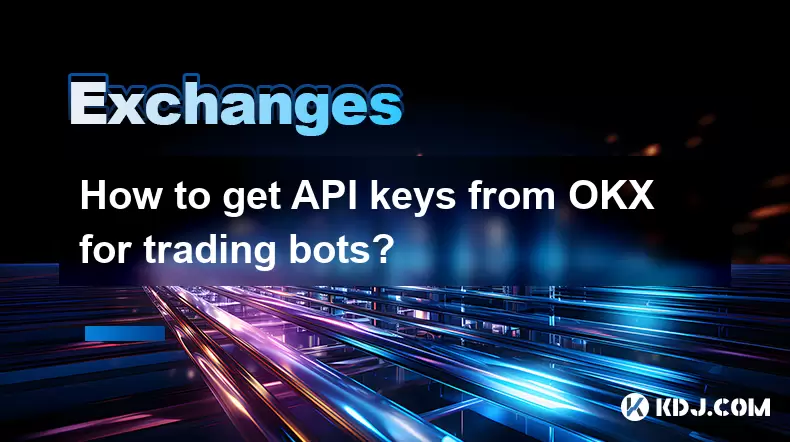
How to get API keys from OKX for trading bots?
Jul 03,2025 at 07:07am
Understanding API Keys on OKXTo interact with the OKX exchange programmatically, especially for building or running trading bots, you need to obtain an API key. An API (Application Programming Interface) key acts as a secure token that allows your bot to communicate with the exchange's servers. On OKX, these keys come with customizable permissions such ...
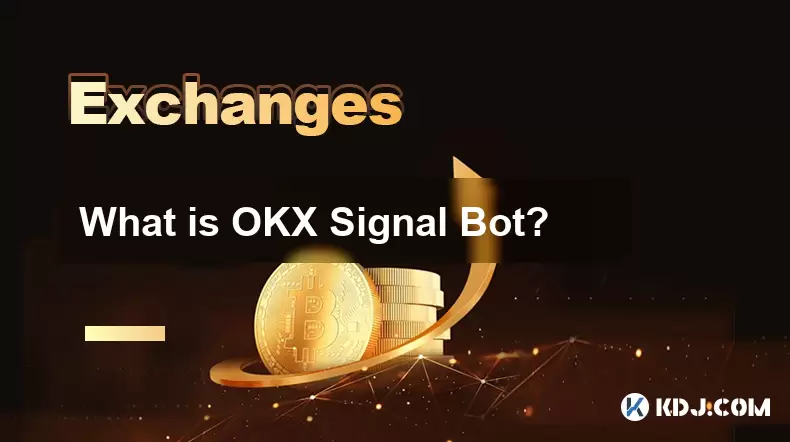
What is OKX Signal Bot?
Jul 02,2025 at 11:01pm
Understanding the Basics of OKX Signal BotThe OKX Signal Bot is a feature within the OKX ecosystem that provides users with automated trading signals and execution capabilities. Designed for both novice and experienced traders, this bot helps identify potential trading opportunities by analyzing market trends, technical indicators, and historical data. ...
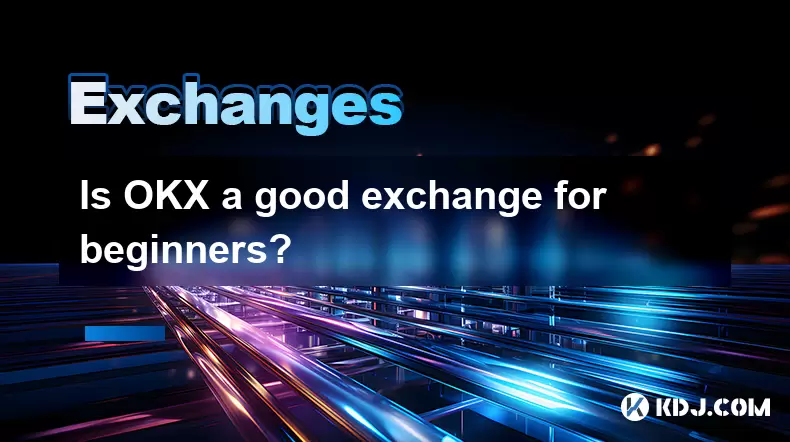
Is OKX a good exchange for beginners?
Jul 03,2025 at 05:00pm
What Is OKX and Why Is It Popular?OKX is one of the leading cryptocurrency exchanges globally, known for its robust trading infrastructure and a wide variety of digital assets available for trading. It supports over 300 cryptocurrencies, including major ones like Bitcoin (BTC), Ethereum (ETH), and Solana (SOL). The platform has gained popularity not onl...
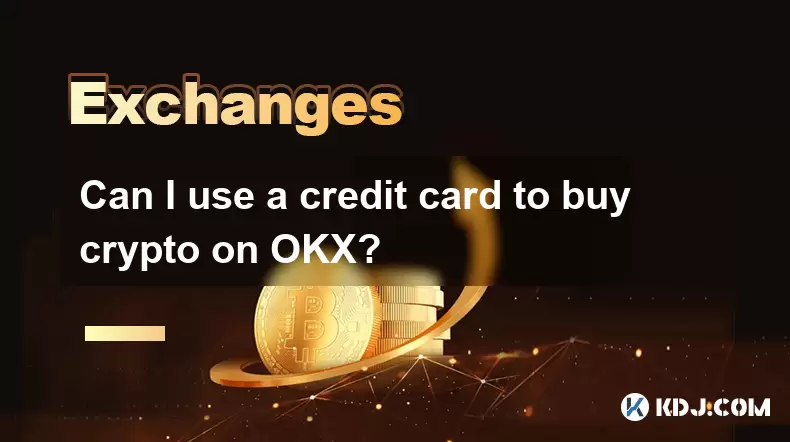
Can I use a credit card to buy crypto on OKX?
Jul 04,2025 at 04:28am
Understanding OKX and Credit Card PaymentsOKX is one of the leading cryptocurrency exchanges globally, offering a wide range of services including spot trading, derivatives, staking, and more. Users often wonder whether they can use a credit card to buy crypto on OKX, especially if they are new to the platform or looking for quick ways to enter the mark...
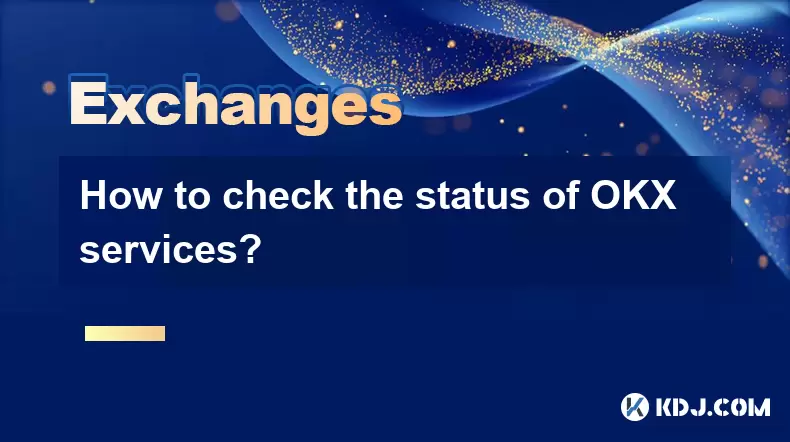
How to check the status of OKX services?
Jul 02,2025 at 11:14pm
What is OKX, and Why Checking Service Status Matters?OKX is one of the world’s leading cryptocurrency exchanges, offering services such as spot trading, futures trading, staking, and more. With millions of users relying on its platform for daily transactions, it's crucial to know how to check the status of OKX services. Downtime or maintenance can affec...
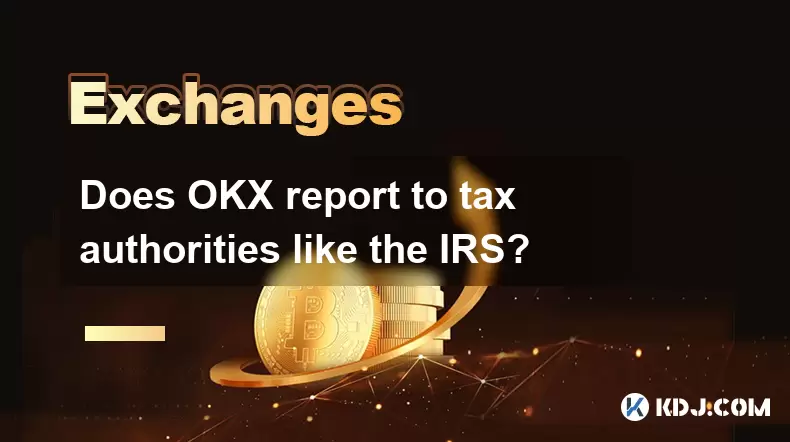
Does OKX report to tax authorities like the IRS?
Jul 03,2025 at 03:14pm
Understanding the Role of Cryptocurrency Exchanges in Tax ReportingCryptocurrency exchanges play a crucial role in facilitating digital asset transactions, but their responsibilities extend beyond trading and custody. As regulatory scrutiny intensifies globally, users are increasingly concerned about whether platforms like OKX report to tax authorities ...

How to get API keys from OKX for trading bots?
Jul 03,2025 at 07:07am
Understanding API Keys on OKXTo interact with the OKX exchange programmatically, especially for building or running trading bots, you need to obtain an API key. An API (Application Programming Interface) key acts as a secure token that allows your bot to communicate with the exchange's servers. On OKX, these keys come with customizable permissions such ...

What is OKX Signal Bot?
Jul 02,2025 at 11:01pm
Understanding the Basics of OKX Signal BotThe OKX Signal Bot is a feature within the OKX ecosystem that provides users with automated trading signals and execution capabilities. Designed for both novice and experienced traders, this bot helps identify potential trading opportunities by analyzing market trends, technical indicators, and historical data. ...

Is OKX a good exchange for beginners?
Jul 03,2025 at 05:00pm
What Is OKX and Why Is It Popular?OKX is one of the leading cryptocurrency exchanges globally, known for its robust trading infrastructure and a wide variety of digital assets available for trading. It supports over 300 cryptocurrencies, including major ones like Bitcoin (BTC), Ethereum (ETH), and Solana (SOL). The platform has gained popularity not onl...

Can I use a credit card to buy crypto on OKX?
Jul 04,2025 at 04:28am
Understanding OKX and Credit Card PaymentsOKX is one of the leading cryptocurrency exchanges globally, offering a wide range of services including spot trading, derivatives, staking, and more. Users often wonder whether they can use a credit card to buy crypto on OKX, especially if they are new to the platform or looking for quick ways to enter the mark...

How to check the status of OKX services?
Jul 02,2025 at 11:14pm
What is OKX, and Why Checking Service Status Matters?OKX is one of the world’s leading cryptocurrency exchanges, offering services such as spot trading, futures trading, staking, and more. With millions of users relying on its platform for daily transactions, it's crucial to know how to check the status of OKX services. Downtime or maintenance can affec...

Does OKX report to tax authorities like the IRS?
Jul 03,2025 at 03:14pm
Understanding the Role of Cryptocurrency Exchanges in Tax ReportingCryptocurrency exchanges play a crucial role in facilitating digital asset transactions, but their responsibilities extend beyond trading and custody. As regulatory scrutiny intensifies globally, users are increasingly concerned about whether platforms like OKX report to tax authorities ...
See all articles

























































































